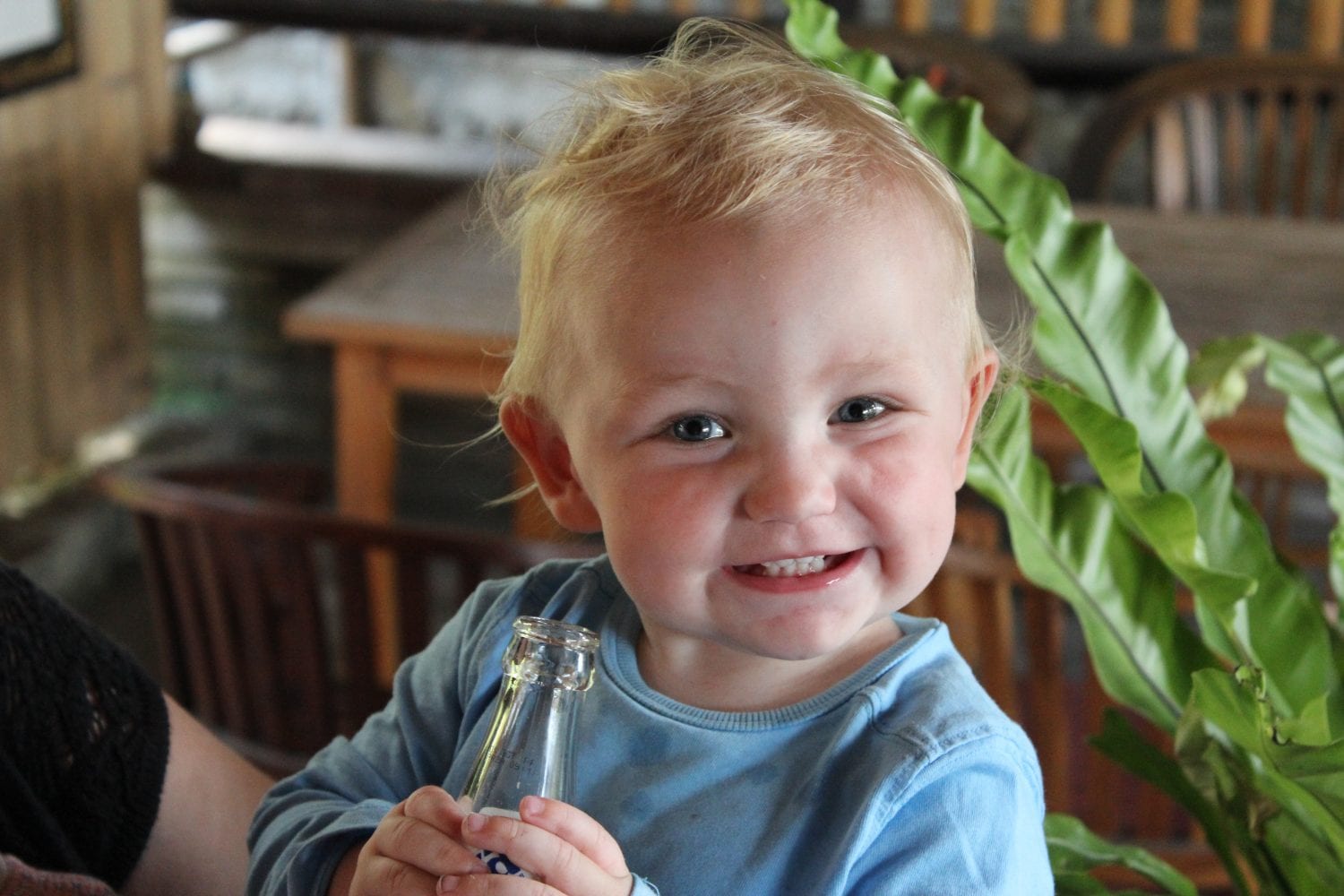

When planning a trip with an infant, the two most important decisions in terms of equipment are the travel cot and the pushchair. Depending on the type of trip you are planning, getting these items right can be absolutely vital.
Travel Cots
Some hotels will provide a cot in your room, but there will often be an additional charge for this and so it may be more cost effective to purchase a travel cot. If your trip involves only one hotel or travel with a rental car, a standard light weight travel cot would be the best option. Although they can be quite bulky, the space and sturdiness they provide for an infant are worth the extra baggage. Unlike some smaller options, these types of travel cots are suitable for use from birth up to three years of age, making them a good investment if you will be taking multiple holidays during this time. Some airlines will carry travel cots free of charge in addition to your checked baggage limit, others will charge unless you incorporate the travel cot into your existing baggage allowance. You will need to check with your individual airline for their policies. If your trip involves a lot of travel without a car for much or all of the travel, using a standard travel cot would be awkward and would make life extremely difficult. There are a few options available for very compact and lightweight travel cots. These types of travel cots require some research in order to find the right one to fit your criteria. Although they are not ideal, as they sit directly on the floor and often have quite thin mattresses, they are essential when embarking on a trip that involves extensive travel.
You may consider buying a travel cot once you reach your destination, if you are travelling to somewhere where this may be a cheaper option, such as the US.
‘When deciding on a travel cot for our latest trip, I knew that one of the very light weight options was essential. I had never used one before and was a little dubious about them. When I first started my research, I found the LittleLife Arc 2 travel cot. It looked perfect and had good reviews, but it had one problem, the price. After scouring the net for hours, the cheapest price I found was £80. With budget in mind, I decided to research alternate options. My youngest (and last!!!) child was 12 months old and since this type of travel cot is only suitable for use up to 18 months, it would only be used for a single trip, for which £80 seemed a bit excessive. As parents it is often our instinct to go out and get our children the most expensive things we can afford, but it is important to remember that a high price tag does not necessarily mean the best product for yours and your infant’s requirements. I have fallen into this trap on many occasions over my years of parenting but now, three children in, I can no longer afford to splurge on unnecessary items. I then came across the Koo-di (formally Samsonite) travel cot, costing around £40. It looked great for purpose and also had good reviews; however, one common complaint with this item seemed to be how thin the mattress is. I of course wasn’t going to have my son sleeping somewhere that wouldn’t be comfortable for him, but the Koo-di being half the price of the LittleLife cot I couldn’t give up on it so easily. I looked at the inflatable mattress available for the Koo-di cots, but a lot of the reviews for it were terrible and it cost around £25. I thought about what I could possibly put under the mattress to make it comfier, such as pillows, and then his dad had the great idea of cutting down a camping roll mat to fit inside the cot underneath the mattress. I had to get a wider than regular roll mat to fit the dimensions of the cot, but this still only cost £7.99.’ The Koo-di travel cot is very easy to erect and is suitable from 6 to 18 months of age. The sides and roof of the cot are made from netting material which is suitable for use as insect and mosquito netting. It folds away into a small carry bag and weighs only 2.2kg. There is also a pop-up bassinette available from Koo-di, suitable from birth to 6 months.
‘Now came the real challenge; getting my baby boy to sleep in it! He was more than happy to play in the cot, but didn’t like being zipped in. As our trip involved travelling to places where mosquitos are a significant problem, he had to get used to it before we left. I decided it would be much easier to get him accustomed to the cot at home and deal with all the tears and tantrums here, rather than in hotel rooms abroad. I left the cot erected in the living room for a couple of weeks, allowing him to crawl in and out of it at his leisure. I then decided to place the travel cot inside actual cot to get him used to sleeping in it. He put up a good resistance, but eventually I was able to get him to sleep in it with the side zipped up. The Koo-di travel cot is a fantastic choice for trips involving lots of travelling and I would highly recommend it.’
Pushchairs
The type of pram/pushchair you take will depend on your child’s age and your type of holiday, and it may be that your regular pushchair is sufficient. If you need something smaller, very basic lightweight buggies can be picked up from as little as £15 (not suitable for babies under 6 months). If your baby will be spending a lot of time in the pushchair, these are probably not a great idea; go for something more comfortable that has a hood, basket and lay-back options. If you will be doing a lot of walking and/or walking on rough terrain, you will need a sturdy pushchair, preferably with lockable wheels and all round suspension. If your regular pushchair doesn’t meet your needs but you don’t want to splash out on a new one, you could consider buying second hand, particularly if it will only be used for holidays. There is of course lots of other equipment to take along for the little ones.
Carriers
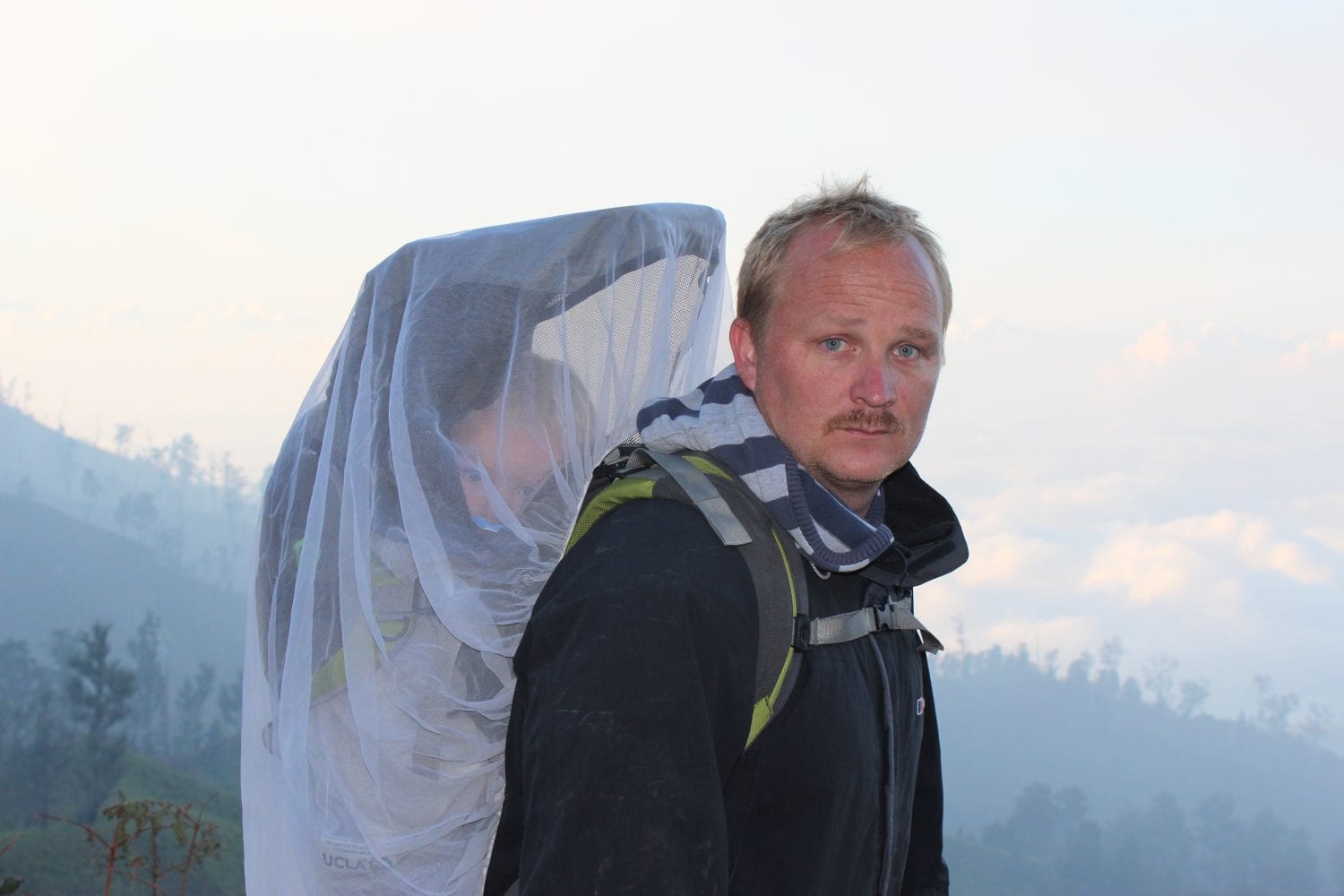

A carrier can be a handy item to take along and there are various options available. Most front carriers are suitable from birth to approximately 12 months; carriers that can be used as both front and back carriers are usually suitable from birth to approximately 18 months and back carriers from 6 months to 15kg (approximately 36 months). Most sling style carriers are suitable from birth to 15kg. For extensive walking or walking on tough terrain, such as mountains or volcanos, a back carrier is essential for infants from 6 months old. There are some great options available. ‘My preference for a general day to day carrier is the sling style. For my youngest now I use the BabaSling, which is suitable form birth to 15kg. It is light weight, folds neatly into its own small bag and is available in a wide range of colours. Although these carriers can be expensive, there are often sales on less popular colours direct from BabaSling and so you can get a great deal. My favourite back carriers are the LittleLife range. They can be quite expensive, but I have always found them to be great quality and I believe this to be an item worth investing in.’ The accessories for these back carriers are also quite expensive, but if you shop around there are deals to be found. If travelling somewhere hot, the LittleLife sun shade is a must. It is a structure that attaches to any LittleLife back carrier. The rain cover is of similar design, but not an essential item as an adult poncho can be placed over the sun shade frame, giving protection from the rain at a fraction of the cost. There is also a travel carrier available specifically for the back carriers, but again cheaper options are available, such as a fold away holdall.
Sterilising and Preparing Bottles
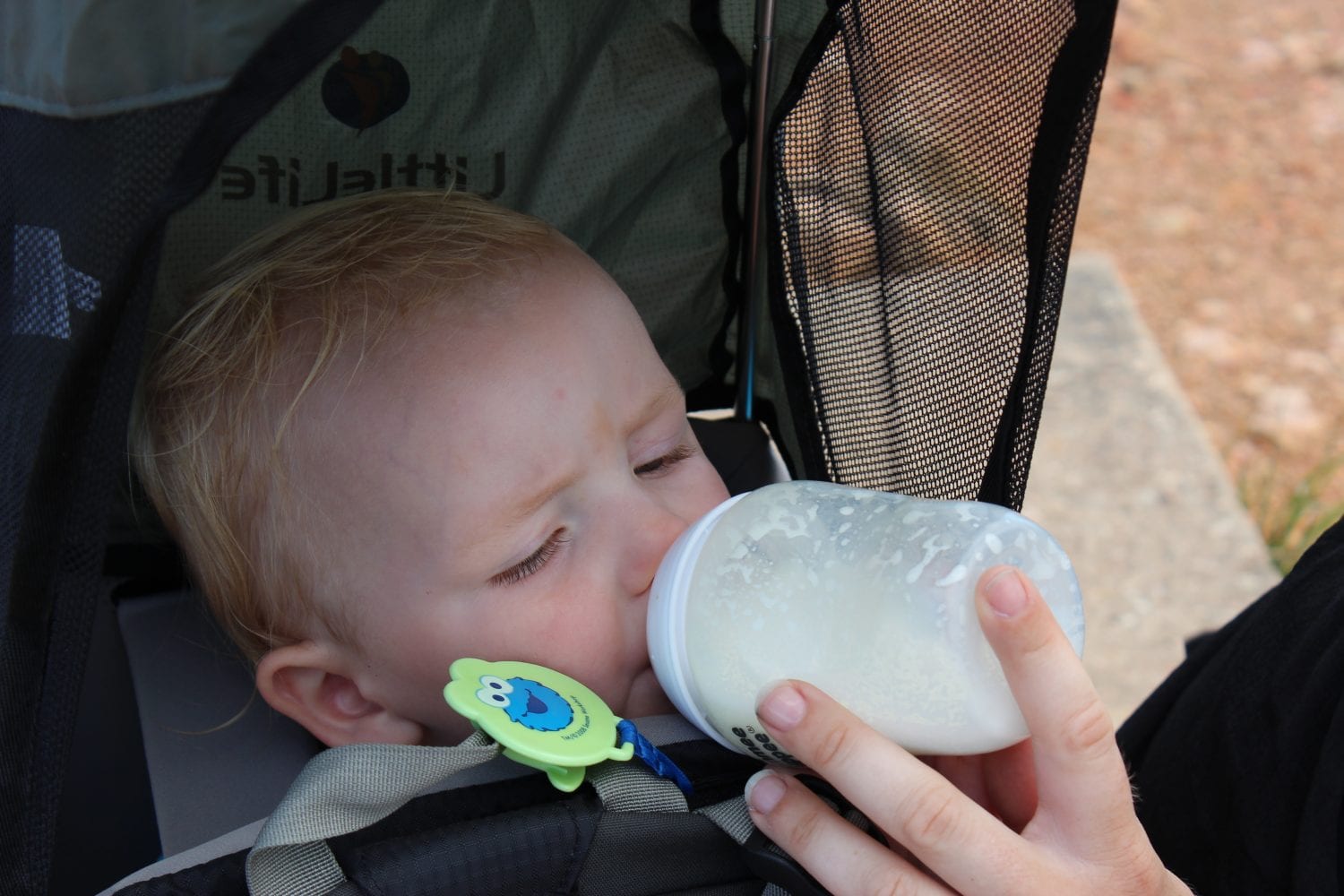

If your infant is under 12 months and so still needs their bottles to be sterilised, this can make things awkward. Sterilisers are often quite bulky items and not ideal shapes for packing, particularly steam ones. A microwave steriliser that doubles as a fresh water steriliser may be a better option or, to keep costs minimal, you could just purchase a large tupperware tub and some sterilising tablets. A good tip for space saving when packing is to fill your steriliser/tub with baby milk/food. Depending on the length of your stay and how much milk your baby goes through, readymade formula cartons can be an easier option than making up bottles in a hotel room. If you prefer to make up the bottles, check with your hotel that there is a kettle in the room (these are not always in the nicest of conditions) or you could perhaps take a travel kettle with you. If you choose this option, you may need to make up bottles on the go so to make life easier you could make up all the bottles with just boiled cooled water in the morning and carry the milk powder in a hand dispenser.
Other Items to Consider
If you are travelling to an area where mosquitos and other insects can be a problem, it is important to take an insect net to protect your child whilst out in the pushchair and overnight in the travel cot. You can purchase these separately, or there are universal nets that will fit both. A sun shade or parasol for the pushchair is also a must in hot countries. The remainder of other infant items you might choose to take are really down to personal preference. There are some fantastic travel items available for babies and children now. ‘Before planning the items I wanted to take for my baby on my latest trip I had never heard of the Koo-di brand, but I have discovered that they make some great pack away products. I think I got a bit carried away with the novelty of ‘pack away’, and perhaps the changing bag that folds into a smaller bag wasn’t strictly necessary, but it does the job all the same. Other items I purchased were a seat harness, perfect for those places that don’t have highchairs, and the pushchair sun shade. They all fold away very neatly and are small enough to carry in a changing bag or handbag. Prices can vary quite significantly, so shop around to get the best deals.’

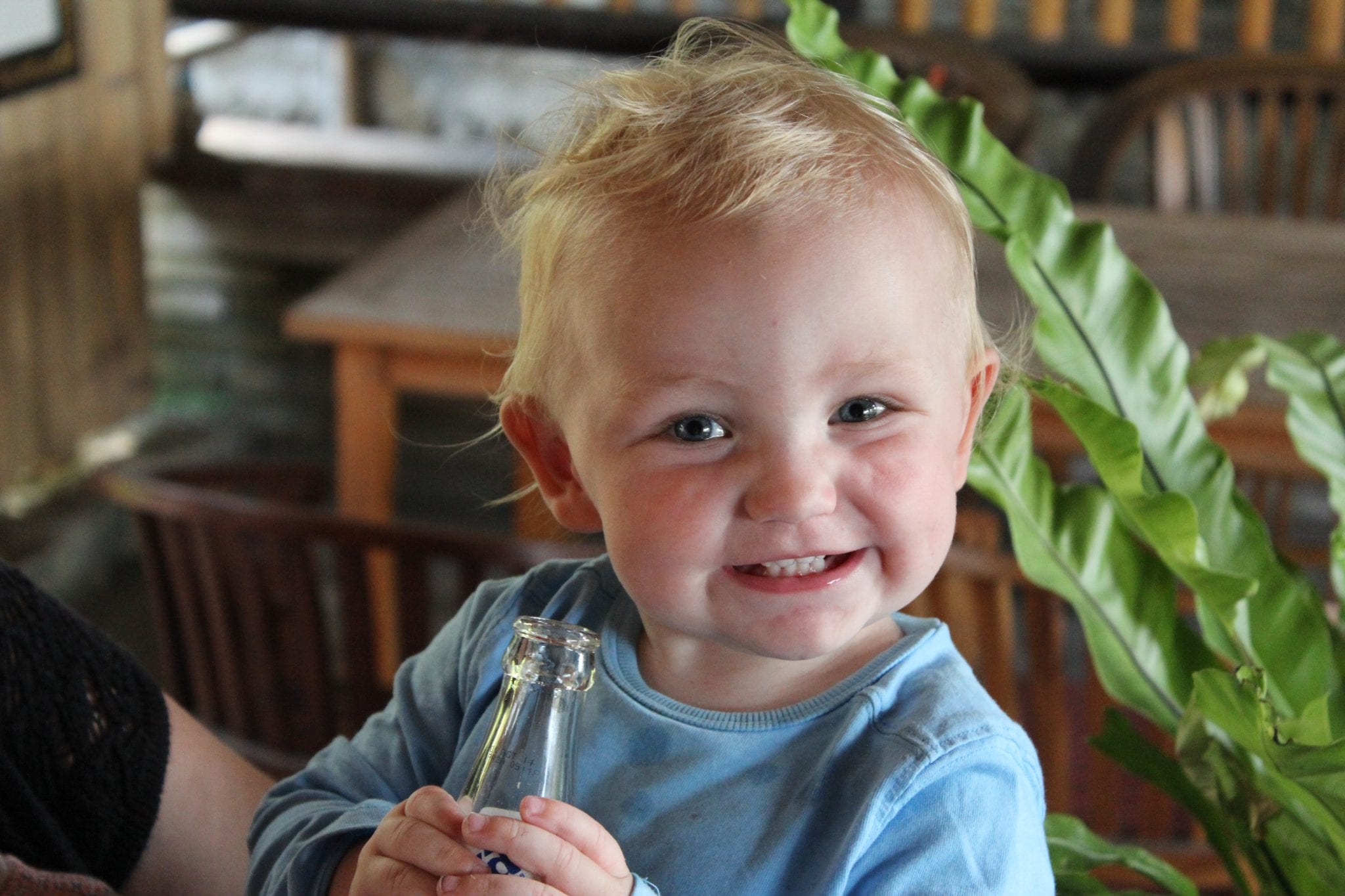



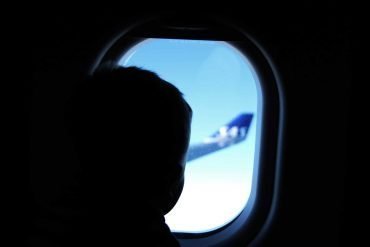
Comments are closed.